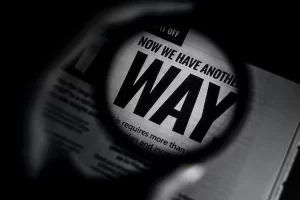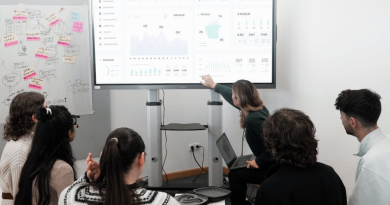Do’s and Don’ts of On-page SEO
Table of Contents
DO’s & Don’ts of On-page SEO Checklist
On-page SEO checklist:

Here’s the complete on-page SEO checklist:
- Identify target keywords
- Optimize the title tag
- Write your headline in an H1 tag
- Write a meta description that boosts clicks
- Check the URL slug for SEO-friendliness
- Add target keywords to your body content
- Review your content quality
- Mark up subheadings with header tags
- Improve navigation with internal links
- Add engaging visual content
- Apply schema markup
Bonus:
- Make sure your page is indexed
- Increase page speed
- Make sure your page is mobile-friendly
Here we discuss about the DO’S & DONT”S of On page SEO:
Title Tag for On-page SEO:

| Do’s of Title Tag for SEO: | Don’ts of Title Tag for SEO: |
| 1. Perform Keyword research before writing Title.
2. Title tags should be only 65–70 characters long including spaces.
3. Use Keywords in the Title tag and place keywords in the beginning.
4. Consider using an SEO plugin.
5. Keep your Title Tag unique.
6. Titles should accurately describe your web page.
7. Do mention your brand name.
|
1. Don’t use punctuations such as commas, underscore, and dashes in the Title tag.
2. Don’t completely capitalize Title Tag.
3. Don’t use stop words in Title Tag.
4. Don’t stuff titles with Keywords.
5. Don’t repeat keywords in Title Tag.
6. Don’t use slang or metaphors in the Title tag.
7. Don’t Use multiple Title tags per page.
|
Meta Description for On-page SEO
| Do’s | Don’ts |
| Use a call-to-action. Give readers a reason to view your webpage by telling them what they will get if they click on your link.
it must be 120-160 letters for mobile its 120 letters even space including. we must use targeted keywords.
|
Try to fool the viewer by stuffing tons of keywords into the description that are not relevant to the information they will find on the page.
They will end up exiting your page immediately. Both the viewer and search engines will start to look at your website as one that can’t be trusted, hurting your online reputation.
|
Keywords for On-page SEO

| Do’s | Don’ts |
| Use long-tailed keywords because these words have less competition and traffic, yet will direct more targeted Internet searchers to your website. | Use generic keywords. While they get hundreds or thousands of searches, they are not specific to your webpage and could get lost in the shuffle with larger, more established websites.
we must give attention to give keyword , don’t focus on more keywords
|
Heading tags for On-page SEO
| Do’s | Don’ts |
| Use sparing Check for relevance Aim for clarity Use them as only as a styling tool.
6 kind of heading tags h1 to h6 |
Go overboard with text Axe unnecessary words Make it too long or too short stuff keywords.
don’t use links on the heading tags
|
URL slug
| Do’s | Don’ts |
| Keep it concise: A URL slug should be short and sweet. it must be 50-60 characters.
include exact keywords , then use only lower case letters.
Use hyphens to separate words: Not only do hyphens make your URL slug more readable, but they also help search engine crawlers to recognize individual words. |
Don’t use this kind of – a , the , and.
Don’t use date on url slug
|
Keywords optimization in content
| Do’s | Don’ts |
| DO incorporate keywords that are relevant to the page….
DO make your Metadata Description representative of the page content….
DO have other websites linking to yours, but don’t link back to them!
|
DON’T put all of your keywords on one page.
DON’T engage in keyword stuffing or unnatural phrasing….
don’t force the keywords fit into the keywords
|
Tags in WordPress
| Do’s | Don’ts |
| Always use an appropriate plugin to manage SEO of your WP site.
Set up a perfect Permalink structure
Understand the differences between pages, posts, and the custom post types |
Simply rely on the theme to be sufficient for overall site optimization.
Ignore slugs
Forget to add relevant images to the posts |
Featured image
| Do’s | Don’ts |
| Featured images are used as thumbnails when pages or blog posts are shared on social media.
You can choose whether to set a featured image on each individual page or post.
we must add featured image and there should be 3 images and images which is closest to the topics should be at the top incase of muiltiple images.
|
Don’ts stuff keywords in alternative text
if u don’t put content to your image , image alt text anyone can interpreted according to their own preference.
we must not use this words are and image of ,a picture.
don’t try to make all images count equally.
|
Internal links
| Do’s | Don’ts |
| Plan your Content for a Better Internal Linking Structure.
Link Old Posts to New Posts.
Place Important Pages in the Navigation Bar.
use only exsisting links add important links at the top of the content |
Don’t Overoptimize your Anchor Texts.
Don’t Link Too Much.
Don’t Orphan Pages.
Don’t link to Page B using the same Anchor Text you want Page A to rank for.
don’t link for one word use 2 to 3 for joint words.
|
External links
| Do’s | Don’ts |
| Make the links relevant.
Link to reputable sources.
Use anchor text correctly.
Add helpful links.
Open external links in a different tab.
only use 3 external links.
|
Don’t link to low domain authority websites unless they contain relevant information you need.
Don’t link to too many sites within one piece of content.
Don’t steal content from other sites and pass it off as crediting them through outbound links.
Don’t use link schemes.
Don’t link to 404 pages.
Don’t link competitor page. |




